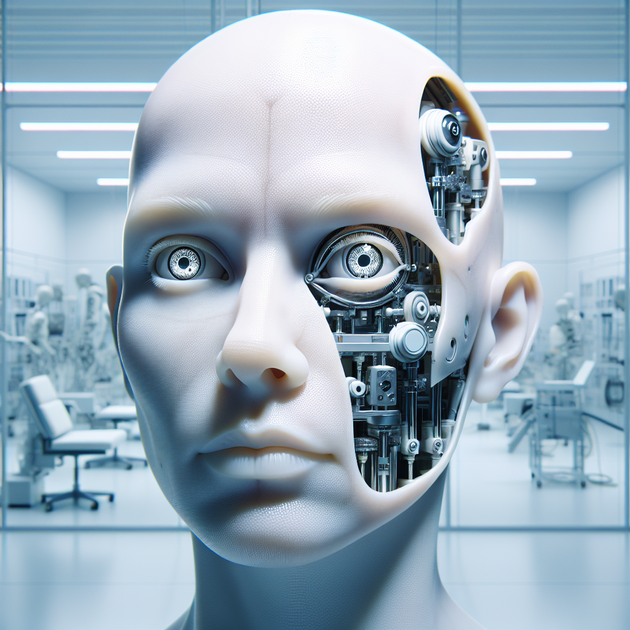Chinese Tech Company Develops Creepy Ultra-Lifelike Robot Face — Watch It Blink, Twitch and Nod
What if the next person you meet isn’t actually a person at all? A Chinese tech company is grabbing attention worldwide for creating an ultra-lifelike robot face that can blink, twitch, and nod in ways eerily close to real human expressions. The line between people and machines is getting thinner every day.
How Does This Lifelike Robot Face Work?
The magic behind this lifelike robot face comes down to a blend of advanced motors, flexible skin materials, and some seriously clever programming. Instead of stiff movements or blank stares that used to define robots in the past, this new creation can:
- Blink rapidly or slowly (just like we do when tired or surprised)
- Twitch an eyebrow or cheek with subtlety
- Nod its head smoothly to mimic understanding
- Change its expression from neutral to curious in an instant
These features are powered by a series of small actuators beneath the “skin,” which itself is made from soft silicone designed to stretch and compress just like human skin. Combined with advances in facial animation technology—think of what’s used in high-end video games—the result is a face so natural it can be unsettling.
Why Build Such Realistic Robot Faces?
So what’s the point of making robots look so much like us? For one thing, researchers hope these lifelike faces will help us interact more smoothly with machines. After all, if a robot can show empathy or react with subtle emotions using realistic facial expressions, people may feel more comfortable talking to it.
This has big implications for several industries:
- Healthcare: Companion robots could comfort patients or help elderly people feel less lonely.
- Customer service: Receptionist robots might greet visitors with genuine smiles—or at least convincing ones.
- Entertainment: Theme parks could feature animatronics that finally look as alive as they sound.
- Education: Teaching assistants could better engage with students through expressive communication.
But let’s be honest—the effect can be pretty creepy too. There’s something about seeing a machine come so close to mimicking our humanity that triggers what psychologists call the “uncanny valley”—that uneasy feeling we get when something looks almost human but not quite.
The Uncanny Valley Effect—Why Realism Can Be Unsettling
Watching these new robots on video—like the one posted on Reddit—you’ll notice how easy it is to get both fascinated and unnerved at once. When a robot face blinks or twitches just so slightly off from what we expect from humans, our brains immediately pick up on it.
This phenomenon isn’t new. Back in the early days of animation and robotics, creators noticed people reacted strongly when artificial faces got “too close” to reality without being perfect. The result? Instead of empathy or delight, viewers felt discomfort.
Here’s why these lifelike robot faces walk such a fine line:
- We’re hardwired to read micro-expressions for trustworthiness.
- Slightly off timing or movement triggers suspicion rather than comfort.
- The more realistic something looks without being fully human, the stronger the uncanny valley effect.
A good friend once described seeing one of these advanced humanoid robots at an expo—it looked right at him and winked. He said he couldn’t decide whether to laugh or take a step back!
The Future of Humanoid Robotics—Where Do We Go From Here?
With technology improving rapidly in both hardware (motors and skin) and software (facial animation driven by AI), lifelike robot faces are only going to get better—and more common. You might see them popping up in hotels as greeters or even helping out at clinics sooner than you think.
Still, there will always be debate about how “human” our machines should look—and whether there’s such a thing as too much realism for comfort.
So here’s the big question: As humanoid robotics become even more lifelike thanks to advances from companies like this one in China, do you feel excited for the possibilities…or just a little bit creeped out?

Leave a Reply